Rhododendron
Common Name(s):
Previously known as:
- Azaleastrum
- Biltia
- Ledum
- Rhodora
- Phonetic Spelling
- rho-doh-DEN-dron
- This plant has high severity poison characteristics.
- See below
- Description
-
Azaleas and rhododendrons are woody, evergreen or deciduous, rounded shrubs in the Ericaceae (blueberry) family. They are native to the United States and Asia and there are many cultivars and varieties, some native to North Carolina. They typically grow 6 to 10 feet tall and 5 to 8 feet wide. The genus name derives from the Greek words rhodo, which means rose, and dendron, meaning tree.
These plants prefer moist, well-drained, acidic soils in dappled shade and protection from afternoon sun which can scorch the leaves. They do not tolerate dense clay, so if you have clay soil, amend with organic material. The roots may rot if soil does not drain well. Plant the root ball high in the soil to help with drainage issues. Avoid overwatering and over-fertilizing. Pruning, if desired, may be done after flowering.
Azaleas and rhododendrons are at home as understory shrubs planted in groups in woodland or naturalized areas, or as specimens in pollinator gardens where the flowers will attract hummingbirds and the specialized bee Andrena cornelli. Some varieties are grown as houseplants.
Per the American Rhododendron Society, "All azaleas are rhododendrons, but not all rhododendrons are azaleas." Here are some general characteristics to differentiate the two:
Quick ID Hints for Azaleas:
- Bloom in April
- Tubular or funnel-shaped flowers
- One flower per stem but has many stems that make the shrub look like it is covered in blooms
- 5 lobes per flower
- 5 stamens
- Multiple bloom colors including white, cream, pink, red, lavender, purple, orange, and yellow
- Foliage elliptical to obovate, thin, small, entire margins, thick pubescence, cluster at the tips of the branch, buds are smaller
- Most are deciduous but there are many evergreens
Quick ID Hints for Rhododendrons:
- Bloom later in the spring
- Bell-shaped flowers
- Blooms grow in clusters at the end of the branch
- 5 lobes per flower
- 10 stamens
- Blooms are typically white, pink, purple, red, and rarely yellow
- Leaves are green elliptic, entire margins, thick, leathery, glossy, undersides may be scaly or have small dots
- Terminal clusters of dried capsules release seeds
Insects, Diseases, and Other Plant Problems: Insect problems include aphids, borers, lace bugs, leafhoppers, mealybugs, mites, nematodes, scale, thrips, and whitefly. Diseases include canker, crown rot, root rot, leaf spot, rust, and powdery mildew. This plant is frequently damaged by deer.
While these shrubs remain popular for landscape use, many cultivars are susceptible to Phytophthora root rot, which leads to leaf loss, reduced vigor, branch dieback, and wilting. Implement good cultural practices first as described above. However, if you have a site with a history of this disease, consider planting root rot-resistant alternative species. See suggestions in the sidebar to the left or see this video created by Charlotte Glen as part of the Plants, Pests, and Pathogens series.
The Clemson Cooperative Extension Home and Garden Information Center has a factsheet on common diseases of rhododendron.
VIDEO Created by Elizabeth Meyer for "Trees, Shrubs and Conifers" a plant identification course offered in partnership with Longwood Gardens.
- Profile Video:
- See this plant in the following landscapes:
- Foundation Planting: Back of House Flower Bonanza Garden Rock & Water Garden Juniper Level Botanic Gardens: Front Shade Garden Juniper Level Botanic Garden: Part Sun-Part Shade Garden Coastal Shade Garden Shady Garden in Cabarrus County Woodland Backyard Garden Walk
- Cultivars / Varieties:
-
- 'Aubie'
- 'Golfer'
- 'Graziella'
- 'Great Balls of Fire'
Pentanthera deciduous - 'High Tide'
- 'Mandarin Lights - Northern Light' Hybrid
- 'Maximum'
- 'Nancy of Robin Hill'
- Pale Moon
- 'Roseum-Elegans'
- 'Silver Bear'
- 'Vibrant Violet Azalea'

Bright pink blooms Encore® Series
'Girard's Crimson'
Purple-red to crimson-red large showy flowers
Showy flowers with excellent colors
Showy clusters of lavender, pink or rose flowers R. alabamense
'Ramapo'
Purple spring flowers R. arborescens
R. atlanticum
R. austrinum
R. calensulaceum
R. canescens
R. catawbiense
R. cumberlandense
R. eriocarpum
R. flammeum
R. impeditum
R. indicum
R. kaempferi
R. maximum
R. minus
R. mucronulatum

R. ponticum
R. prunifolium
R. roseum
R. schlippenbachii
R. vaseyi
R. viscosum
R. yakushimanum

Multiple flower colors depending on cultivar 'Strawberry Ice'
Deep pink buds open to a peachy apricot with yellow shading
Flower opens white tinged pale apricot, aging to white but after 3-4 days become light purplish-pink x bakeri 'Clyo Red'
x hybridum 'Glenn Dale'
x hybridum 'Gunrei Satzuki'
x 'Stonewall Jackson'
- 'Aubie'
- 'Aubie', 'Dr. A. Blok', Encore® Series, 'Girard's Crimson', 'Golfer', 'Graziella', 'Great Balls of Fire', 'High Tide', 'Knaphill and Exbury Azaleas', 'Mandarin Lights - Northern Light' Hybrid, 'Maximum', 'Nancy of Robin Hill', Pale Moon, PJM Group, R. alabamense, 'Ramapo', R. arborescens, R. atlanticum, R. austrinum, R. calensulaceum, R. canescens, R. catawbiense, R. cumberlandense, R. eriocarpum, R. flammeum, R. impeditum, R. indicum, R. kaempferi, R. maximum, R. minus, R. mucronulatum, 'Roseum-Elegans', R. periclymenoides, R. ponticum, R. prunifolium, R. roseum, R. schlippenbachii, R. vaseyi, R. viscosum, R. yakushimanum, 'Silver Bear', Southern Indica Hybrids, 'Strawberry Ice', 'Vibrant Violet Azalea', 'Windbeam', x bakeri 'Clyo Red', x hybridum 'Glenn Dale', x hybridum 'Gunrei Satzuki', x 'Stonewall Jackson'
- Tags:
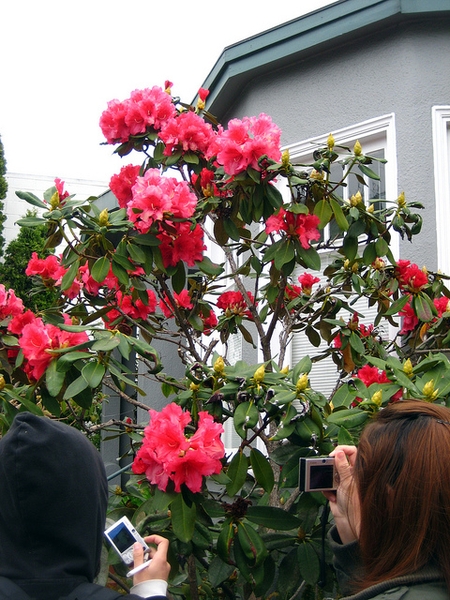

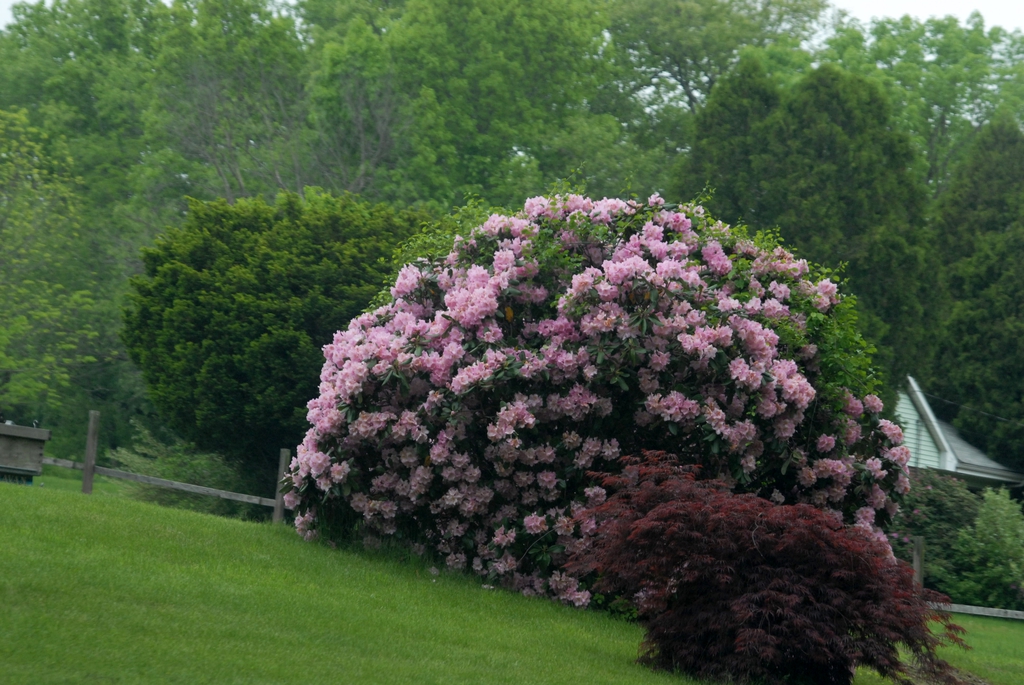

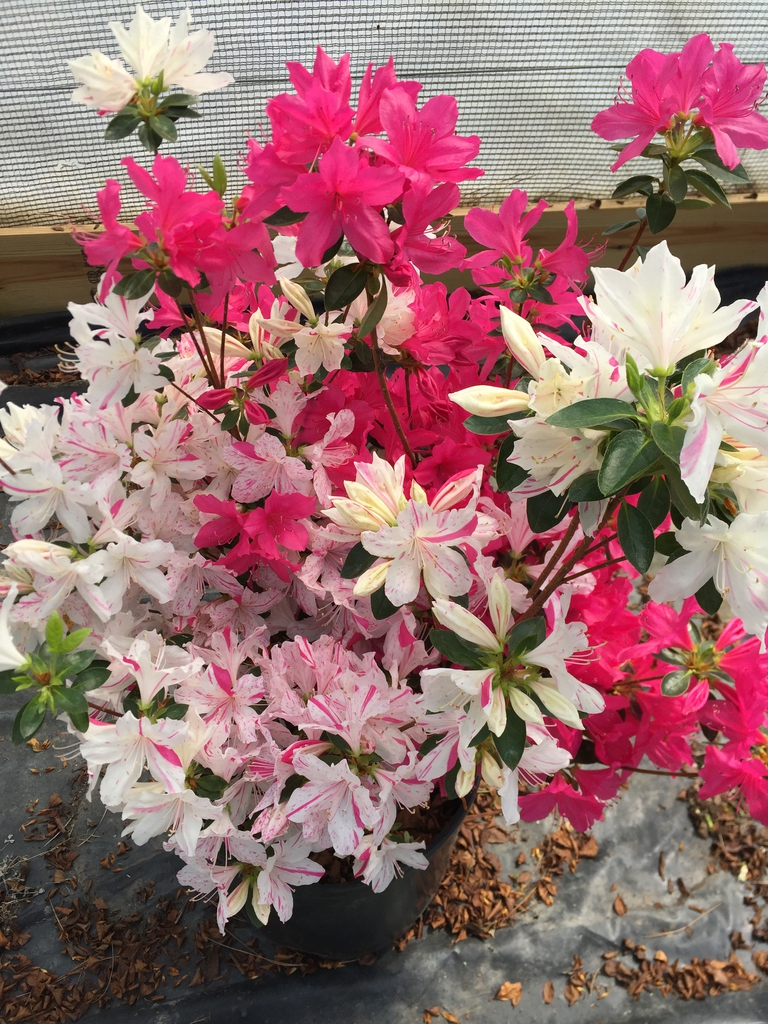
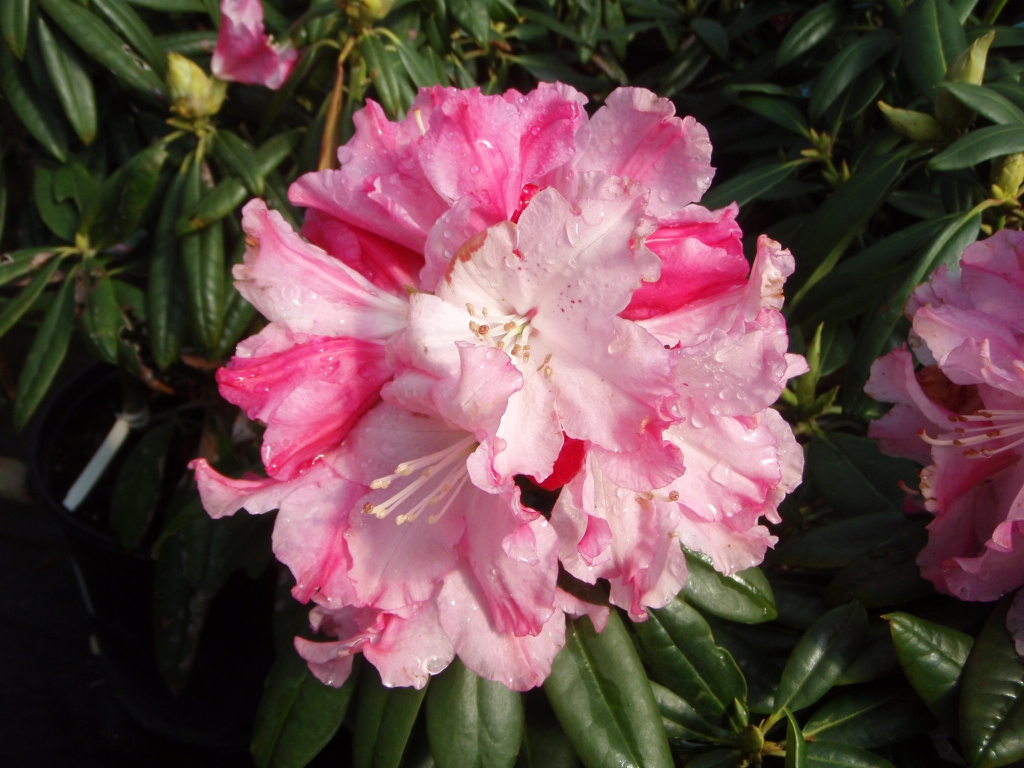




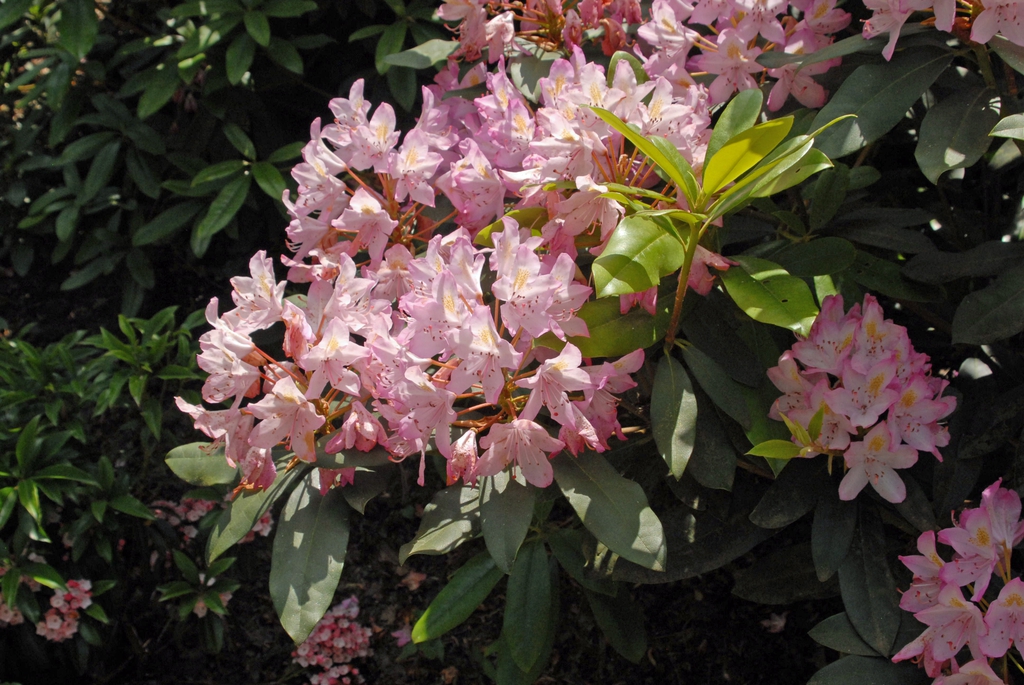
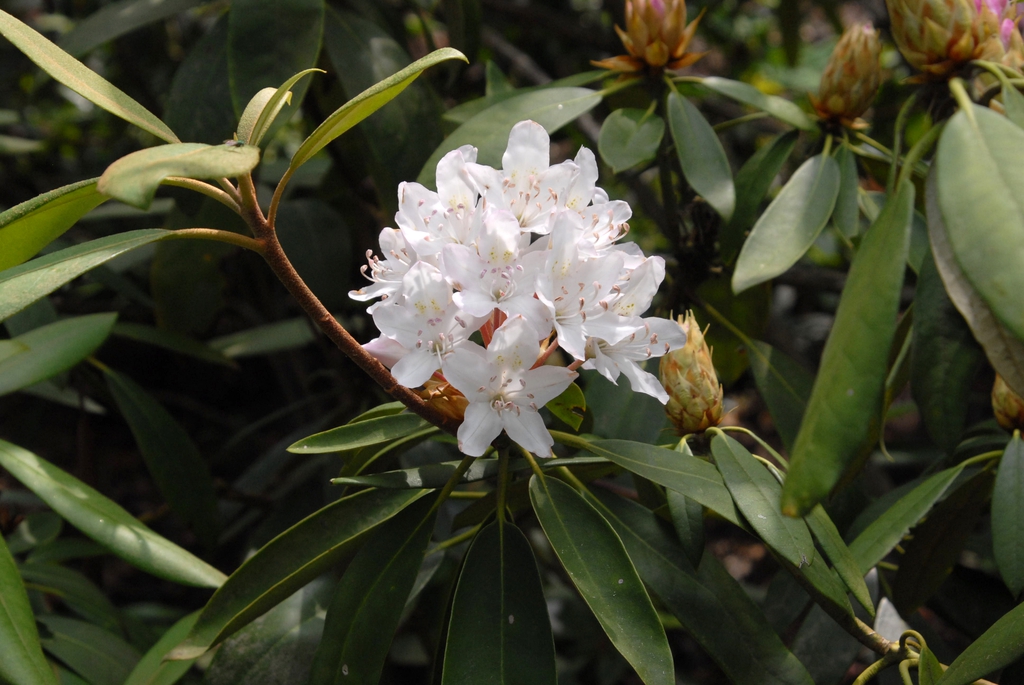




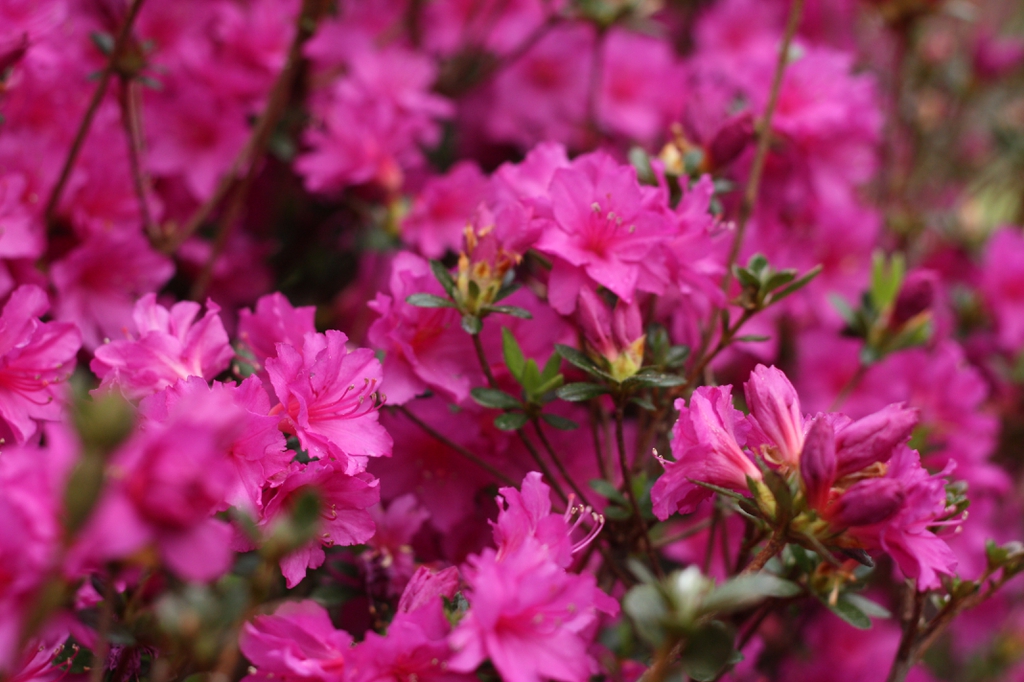


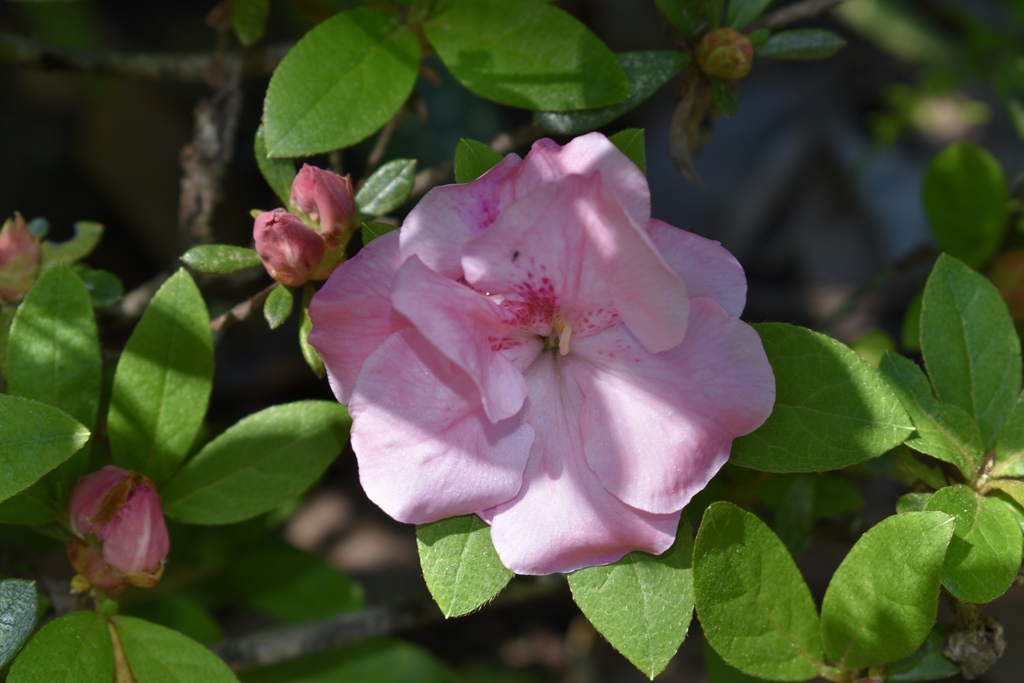






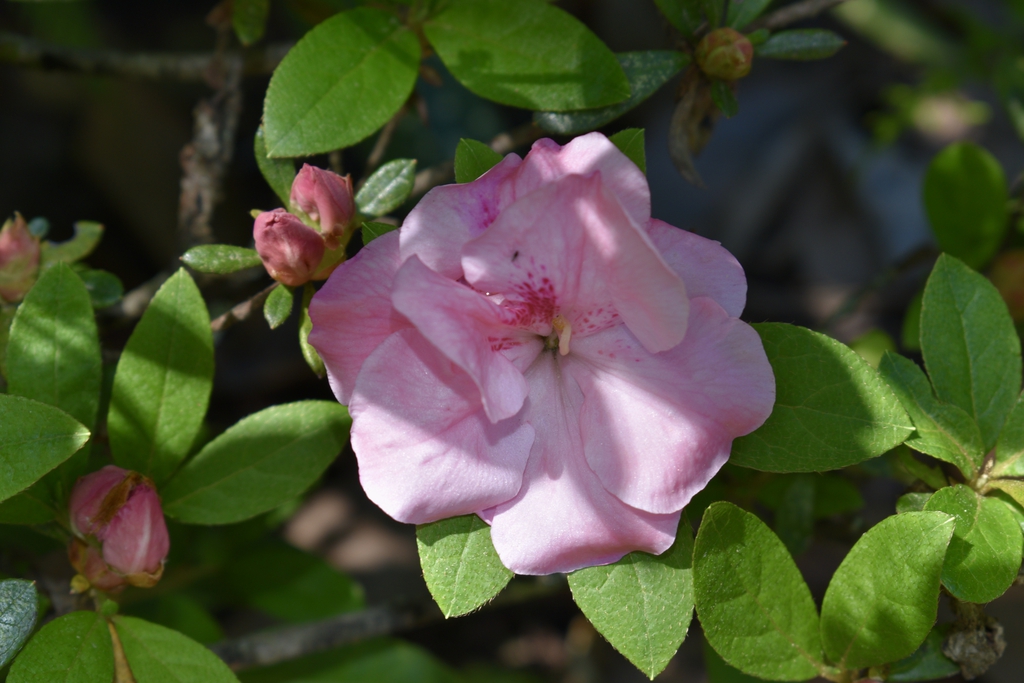
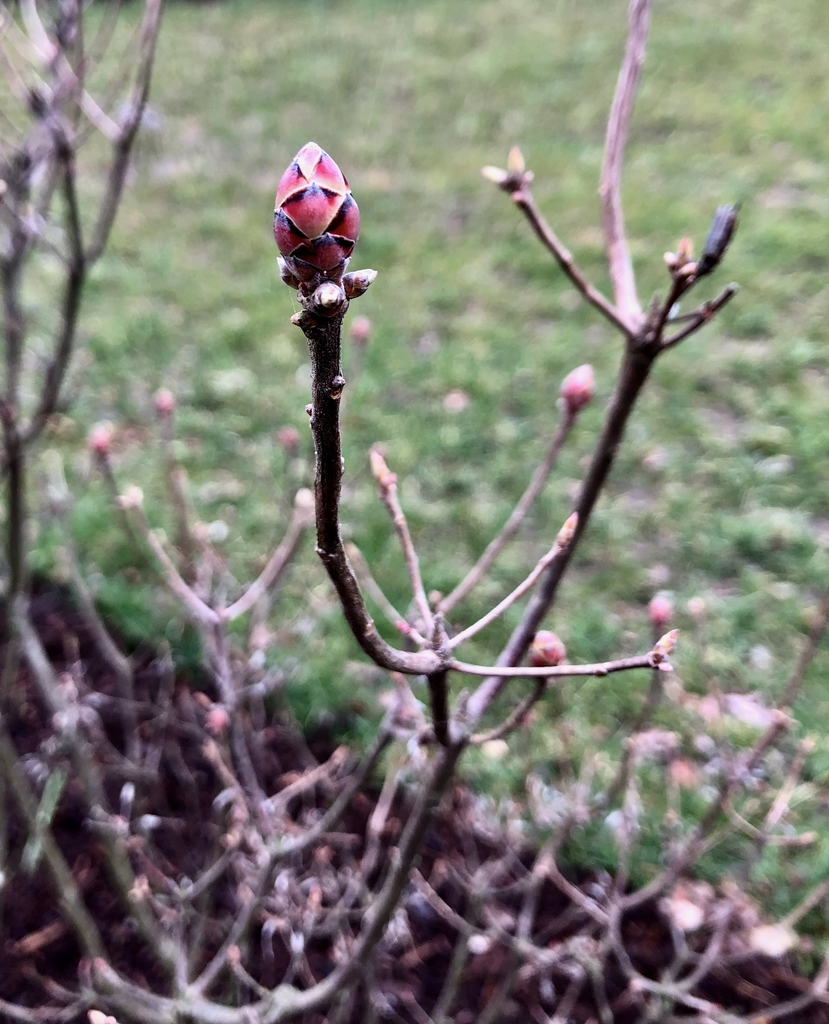


















































- Cultivars / Varieties:
-
- 'Aubie'
- 'Golfer'
- 'Graziella'
- 'Great Balls of Fire'
Pentanthera deciduous - 'High Tide'
- 'Mandarin Lights - Northern Light' Hybrid
- 'Maximum'
- 'Nancy of Robin Hill'
- Pale Moon
- 'Roseum-Elegans'
- 'Silver Bear'
- 'Vibrant Violet Azalea'

Bright pink blooms Encore® Series
'Girard's Crimson'
Purple-red to crimson-red large showy flowers
Showy flowers with excellent colors
Showy clusters of lavender, pink or rose flowers R. alabamense
'Ramapo'
Purple spring flowers R. arborescens
R. atlanticum
R. austrinum
R. calensulaceum
R. canescens
R. catawbiense
R. cumberlandense
R. eriocarpum
R. flammeum
R. impeditum
R. indicum
R. kaempferi
R. maximum
R. minus
R. mucronulatum

R. ponticum
R. prunifolium
R. roseum
R. schlippenbachii
R. vaseyi
R. viscosum
R. yakushimanum

Multiple flower colors depending on cultivar 'Strawberry Ice'
Deep pink buds open to a peachy apricot with yellow shading
Flower opens white tinged pale apricot, aging to white but after 3-4 days become light purplish-pink x bakeri 'Clyo Red'
x hybridum 'Glenn Dale'
x hybridum 'Gunrei Satzuki'
x 'Stonewall Jackson'
- 'Aubie'
- 'Aubie', 'Dr. A. Blok', Encore® Series, 'Girard's Crimson', 'Golfer', 'Graziella', 'Great Balls of Fire', 'High Tide', 'Knaphill and Exbury Azaleas', 'Mandarin Lights - Northern Light' Hybrid, 'Maximum', 'Nancy of Robin Hill', Pale Moon, PJM Group, R. alabamense, 'Ramapo', R. arborescens, R. atlanticum, R. austrinum, R. calensulaceum, R. canescens, R. catawbiense, R. cumberlandense, R. eriocarpum, R. flammeum, R. impeditum, R. indicum, R. kaempferi, R. maximum, R. minus, R. mucronulatum, 'Roseum-Elegans', R. periclymenoides, R. ponticum, R. prunifolium, R. roseum, R. schlippenbachii, R. vaseyi, R. viscosum, R. yakushimanum, 'Silver Bear', Southern Indica Hybrids, 'Strawberry Ice', 'Vibrant Violet Azalea', 'Windbeam', x bakeri 'Clyo Red', x hybridum 'Glenn Dale', x hybridum 'Gunrei Satzuki', x 'Stonewall Jackson'
- Tags:
-
-
Attributes:
- Genus:
- Rhododendron
- Family:
- Ericaceae
- Uses (Ethnobotany):
- The species has been used in traditional medicine to treat pain, gastrointestinal problems, asthma, colds, and skin diseases. They are toxic and have all been used as poison.
- Life Cycle:
- Woody
- Recommended Propagation Strategy:
- Grafting
- Layering
- Seed
- Stem Cutting
- Country Or Region Of Origin:
- Northern Hemisphere to Tropical Asian Mountains and NE Australia
- Distribution:
- Native: most of the United States except AZ, IA, IN, NE, ND, and SD. Native: Europe, Asia, and NE Australia. Introduced: Belgium, Great Britain, Ireland, Madeira, and the Netherlands.
- Wildlife Value:
- Flowers attract humingbirds. Members of the genus Rhododendron support the following specialized bee: Andrena (Andrena) cornelli. Deer browse this plant.
- Play Value:
- Attractive Flowers
- Colorful
- Dimensions:
- Height: 6 ft. 0 in. - 10 ft. 0 in.
- Width: 5 ft. 0 in. - 8 ft. 0 in.
-
-
Whole Plant Traits:
- Plant Type:
- Houseplant
- Native Plant
- Perennial
- Poisonous
- Shrub
- Tree
- Woody Plant Leaf Characteristics:
- Broadleaf Evergreen
- Deciduous
- Habit/Form:
- Rounded
- Growth Rate:
- Slow
- Maintenance:
- Medium
-
-
Cultural Conditions:
- Light:
- Dappled Sunlight (Shade through upper canopy all day)
- Deep shade (Less than 2 hours to no direct sunlight)
- Partial Shade (Direct sunlight only part of the day, 2-6 hours)
- Soil Texture:
- High Organic Matter
- Loam (Silt)
- Sand
- Soil pH:
- Acid (<6.0)
- Soil Drainage:
- Good Drainage
- Moist
- Available Space To Plant:
- 12 inches-3 feet
- 3 feet-6 feet
- 6-feet-12 feet
- 12-24 feet
- NC Region:
- Coastal
- Mountains
- Piedmont
- USDA Plant Hardiness Zone:
- 4a, 4b, 5a, 5b, 6a, 6b, 7a, 7b, 8a, 8b
-
-
Fruit:
- Fruit Color:
- Brown/Copper
- Red/Burgundy
- Display/Harvest Time:
- Fall
- Fruit Type:
- Capsule
- Fruit Length:
- < 1 inch
- Fruit Width:
- < 1 inch
- Fruit Description:
- A terminal cluster of dried red-brown capsules, 1/2" long, appears in fall and releases seeds.
-
-
Flowers:
- Flower Color:
- Gold/Yellow
- Orange
- Pink
- Purple/Lavender
- Red/Burgundy
- White
- Flower Inflorescence:
- Raceme
- Flower Value To Gardener:
- Showy
- Flower Bloom Time:
- Spring
- Flower Shape:
- Bell
- Funnel
- Tubular
- Flower Size:
- 1-3 inches
- Flower Description:
- Azalea blooms are tubular or funnel-shaped. Rhododendron blooms are bell-shaped. They are both 5 lobed. Azaleas flower on many stems like an umbrella. Rhododendrons bloom in clusters. Azaleas bloom in April and have 5 stamens, and rhododendrons bloom later in the spring and have 10 stamens. Azaleas bloom in pink, red, orange, yellow, white, purple, and lavender. Rhododendrons bloom in pink, red, purple, and white, and rarely yellow.
-
-
Leaves:
- Woody Plant Leaf Characteristics:
- Broadleaf Evergreen
- Deciduous
- Leaf Color:
- Green
- Leaf Feel:
- Glossy
- Leathery
- Leaf Type:
- Simple
- Leaf Arrangement:
- Alternate
- Leaf Shape:
- Elliptical
- Lanceolate
- Oblanceolate
- Obovate
- Ovate
- Leaf Margin:
- Entire
- Hairs Present:
- Yes
- Leaf Length:
- 3-6 inches
- Leaf Width:
- 1-3 inches
- Leaf Description:
- The leaves may be evergreen or deciduous. Azaleas leaves are small, thin, elliptic, and obovate with entire margins. They are also thickly pubescent and cluster at the tips of the branches. Rhododendron leaves are laurel-like, green elliptic with entire margins, thick, leathery, glossy, and cluster at the end of the stem.
-
-
Bark:
- Surface/Attachment:
- Peeling
- Shredding
- Bark Description:
- The bark is thin and sometimes peels or shreds.
-
-
Stem:
- Stem Color:
- Gold/Yellow
- Gray/Silver
- Stem Is Aromatic:
- No
- Stem Description:
- The stems may be erect, creeping, or prostrate, and they may be smooth or hairy. Leaf buds are small, flower buds are larger and shaped like eggs, gray to yellowish
-
-
Landscape:
- Landscape Location:
- Container
- Naturalized Area
- Patio
- Woodland
- Landscape Theme:
- Asian Garden
- Native Garden
- Shade Garden
- Design Feature:
- Border
- Hedge
- Mass Planting
- Screen/Privacy
- Small groups
- Specimen
- Attracts:
- Hummingbirds
- Pollinators
- Specialized Bees
- Resistance To Challenges:
- Rabbits
- Problems:
- Poisonous to Humans
- Problem for Cats
- Problem for Dogs
- Problem for Horses
-
-
Poisonous to Humans:
- Poison Severity:
- High
- Poison Symptoms:
- Salivation, watering of eyes and nose, abdominal pain, loss of energy, depression, nausea and vomiting, diarrhea, weakness, difficult breathing, progressive paralysis of arms and legs, cardiac failure, coma.
- Poison Toxic Principle:
- Andromedotoxin, Grayantoxin
- Causes Contact Dermatitis:
- No
- Poison Part:
- Bark
- Flowers
- Fruits
- Leaves
- Roots
- Sap/Juice
- Seeds
- Stems






















